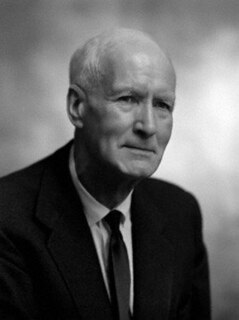This page is based on this
Wikipedia article Text is available under the
CC BY-SA 4.0 license; additional terms may apply.
Images, videos and audio are available under their respective licenses.

Raphael Holinshed was an English chronicler, whose work, commonly known as Holinshed's Chronicles, was one of the major sources used by William Shakespeare for a number of his plays.
The Sadleirian Professorship of Pure Mathematics is a professorship in pure mathematics within the DPMMS at the University of Cambridge. It was founded on a bequest from Lady Mary Sadleir for lectureships "for the full and clear explication and teaching that part of mathematical knowledge commonly called algebra". She died in 1706 and lectures began in 1710 but eventually these failed to attract undergraduates. In 1860 the foundation was used to establish the professorship. On 10 June 1863 Arthur Cayley was elected with the statutory duty "to explain and teach the principles of pure mathematics, and to apply himself to the advancement of that science." The stipend attached to the professorship was modest although it improved in the course of subsequent legislation.
Reginald Wolfe was a Dutch-born English Protestant printer and one of the original members of the Royal Stationers' Company.

A gadget is a small tool such as a machine that has a particular function, but is often thought of as a novelty. Gadgets are sometimes referred to as gizmos.

A power nap is a short sleep that terminates before deep sleep ; it is intended to quickly revitalize the subject. Cornell University social psychologist James Maas coined the term.

Christopher Hinton, Baron Hinton of Bankside was a British nuclear engineer, and supervisor of the construction of Calder Hall, the world's first large-scale commercial nuclear power station.
Raynor is a family name and may refer to:
John Cawood (1514–1572) was an English printer. He came of an old Yorkshire family of some substance and was apprenticed to John Reynes, who is best known as a bookbinder and who died in 1543 or 1544. In 1553 Cawood replaced Richard Grafton as Royal Printer. For his official salary of £6. 13s. 4d. per annum, Cawood was directed to print all "statute books, acts, proclamations, injunctions, and other volumes and things, under what name or title soever" in English, with the profit appertaining.
Megastructure is an architectural and urban concept of the post-war eras which envisions a city or an urban form that could be encased in a massive single man-made structure or a relatively small number of interconnected structures. In a megastructural project, orders and hierarchies are created with large and permanent structures supporting small and transitional ones.
Thomas Preston was an English Benedictine monk serving as one of the leaders of the mission to re-establish the Benedictine Order in England after the closure of monasteries during the 16th century. He is also remembered for his writings upholding the cause of James I of England in the allegiance oath controversy.

Lamspringe Abbey is a former religious house of the English Benedictines in exile, at Lamspringe near Hildesheim in Germany.

The Hikurangi Plateau is an oceanic plateau in the South Pacific Ocean east of the North Island of New Zealand. It is part of a large igneous province (LIP) together with Manihiki and Ontong Java, now located 3,000 km (1,900 mi) and 3,500 km (2,200 mi) north of Hikurangi respectively. Mount Hikurangi, in Māori mythology the first part of North Island to emerge from the ocean, gave its name to the plateau.
Martin Everardus Reyners, Auckland, New Zealand FRSNZ Ph.D., is a New Zealand geophysicist and seismologist. He is a Principal Scientist at the Institute of Geological and Nuclear Sciences, Lower Hutt, and is a specialist in subinduction zones, especially in relation to New Zealand.

Canertinib (CI-1033) is an experimental drug candidate for the treatment of cancer. It is an irreversible tyrosine-kinase inhibitor with activity against EGFR (IC50 0.8 nM), HER-2 (IC50 19 nM) and ErbB-4 (IC50 7 nM). By 2015, Pfizer had discontinued development of the drug.
Henry Burnell (c.1590-c.1654) was an Irish politician, playwright and landowner of the seventeenth century. The details of his life are not well recorded, but he was a prominent member of the Irish Confederacy, and a member of a leading Dublin landowning family who lost their possessions after the failure of the Irish Rebellion of 1641. He is now remembered mainly as the author of Landgartha, the first play by an Irish playwright to be produced in an Irish theatre, and as the father of the poet Eleanor Burnell.







